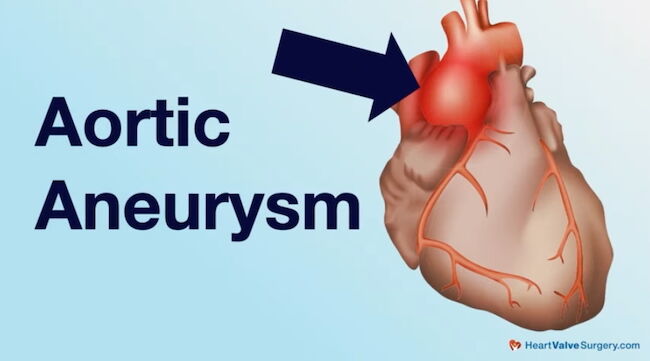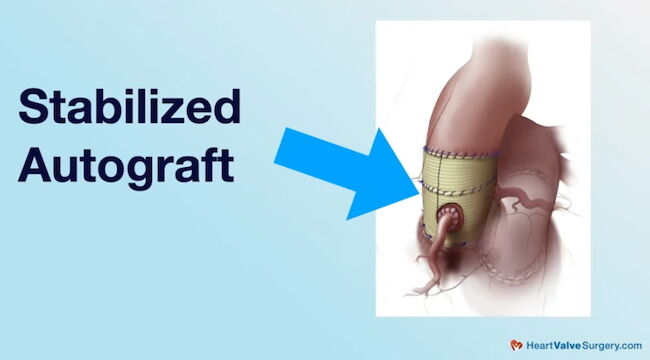Surgeon Q&A: Aortic Aneurysms, Aortic Valve Disease & Ross Procedure Candidacy
Written By: Allison DeMajistre, BSN, RN, CCRN
Medical Expert: Chris Malaisrie, MD, Cardiac Surgeon, Northwestern Medicine, Chicago, Illinois
Reviewed By: Adam Pick, Patient Advocate, Author & Website Founder
Published: August 14, 2025
More patients with aortic valve disease are undergoing Ross Procedures, thanks to their continued success over the last decade. In fact, the Society of Thoracic Surgeons reports that approximately 7 percent of patients under 60 years old now choose the Ross Procedure, compared to only 1 percent in the same age range seven years ago. The complex and innovative surgery offers patients long-term durability that biologic valves can’t yet provide, and it doesn’t require the lifetime blood-thinning medications of a mechanical valve replacement.
Given the elevated interest in the Ross Procedure, we are often flooded with questions from patients who want to know if it could be the right option for treating their aortic valve disease. One question is, “Can a patient with an aortic aneurysm and aortic valve disease be a candidate for the Ross Procedure?” Adam Pick, founder of HeartValveSurgery.com, met with Dr. Chris Malaisrie, a leading cardiac surgeon at Northwestern Medicine in Chicago, Illinois, to learn more about whether the Ross Procedure may be the right choice when patients have both aortic valve disease and an aneurysm.
Treating an Aortic Aneurysm During the Ross Procedure
Here are the key insights shared by Dr. Malaisrie:
- The Ross Procedure involves more than just the aortic valve. “Patients with aortic valve disease often have an aortic aneurysm associated with the disease,” said Dr. Malaisrie. “People think that Ross Procedures are just to treat aortic valve disease or replace the diseased valve with the patient’s own pulmonary valve, but a lot of times, the aneurysm will also get replaced. A large part of the aorta is replaced as part of the Ross operation, so if you have an aneurysm with your aortic valve disease, you are still a candidate for the Ross surgery.”

- What additional considerations do you need to prepare for if you’re doing both the Ross Procedure and an aortic aneurysm treatment at the same time? Dr. Malaisrie said, “There are two things I look at for the Ross Procedure. First, is the procedure doable? Can we perform the Ross Procedure and provide the patient with a fully functional valve? But I’m also looking to make sure that the procedure is durable, meaning it can last years, maybe decades, into the patient’s lifetime.”
- Fixing the aneurysm will help with the long-term success of the operation. Dr Malaisrie said, “The technicality with the aortic aneurysm is to prevent failure of the pulmonary autograft, causing it to get bigger over time. There are techniques we use during surgery to stabilize the autograft, so it doesn’t become aneurysmal. I think this will make the procedure not only doable but also durable.” For patients unfamiliar with the Ross Procedure, the autograft is the pulmonary valve that has been transferred to the aortic position. “We have to take the patient’s diseased aortic valve out and, in its place, we use the patient’s own pulmonary valve along with the pulmonary arteries. So, we’re taking the whole pulmonary route as the replacement piece.”

Thanks Dr. Malaisrie and Northwestern Medicine!
On behalf of all the patients in our community, thank you, Dr. Chris Malaisrie, for everything you and your team are doing at Northwestern Medicine in Chicago, Illinois!
Related links:
- Discover the Ross Procedure Patient Education Center
- Patient Webinar: 6 Misconceptions About Heart Valve Surgery with Dr. Malaisrie
- Northwestern Medicine’s 100th Ross Procedure with 0% Mortality!
Keep on tickin,
Adam
P.S. For the deaf and hard-of-hearing members of our patient community, we have provided a written transcript of our interview with Dr. Malaisrie below.
Video Transcript:
Adam Pick: Hi everybody. It’s Adam with HeartValveSurgery.com and we’re in Los Angeles, California at the Society of Thoracic Surgeons Conference. I am thrilled to be joined by Dr. Chris Malaisrie, who is a leading cardiac surgeon at Northwestern Medicine in Chicago, Illinois. Dr. Malaisrie, it is great to see you again, and thanks for being with me.
Dr. Chris Malaisrie: Thank you very much, Adam.
Adam Pick: The Ross procedure is a very complex operation. Many patients with aortic valve disease also have aneurysms. Getting lots of questions from patients, which is, can a patient with an aortic valve disease and an aneurysm get a Ross procedure.
Dr. Chris Malaisrie: So you’re absolutely right, Adam. Patients with aortic valve disease often have an aortic aneurysm associated with the aortic valve disease.
People think that Ross procedures are just to treat the aortic valve disease or replace the disease valve with the patient’s own pulmonary valve. But a lot of times, the aneurysm also will get replaced. So, a large part of the aorta is replaced as part of the procedure for the Ross operation. So to answer your question, if you have an aneurysm with your aortic valve disease, you are still a candidate for the Ross surgery.
Adam Pick: Dr. Malaisrie, quick follow up. I’m sure patients are wondering, as a surgeon who does a good amount of Ross procedures, What additional considerations do you need to prepare for if you’re doing both the Ross procedure and an aortic aneurysm treatment at the same time?
Dr. Chris Malaisrie: There’s two things I look at for the ROS procedure. First, is the procedure doable? Can we do this Ross procedure and give this patient a fully functional aortic valve? But I’m also looking to make sure that the procedure is durable, meaning it’s long-lasting years, maybe decades in the patient’s lifetime.
So the technicality with aortic aneurysm is to prevent failure of the pulmonary autograft, meaning that we don’t want to see the replaced valve, the pulmonary autograft, get bigger over time. So, there’s techniques we use during the surgery in order to stabilize the autograft. So the autograft does not become aneurysmal.
And I think this will make the procedure not only doable, but also durable.
Adam Pick: Dr. Malaisrie, for someone who doesn’t know much about the Ross procedure, when you say autograft, you’re talking about the. pulmonary valve that has been transferred over to the aortic position, is that
Dr. Chris Malaisrie: That’s correct. We have to take the patient’s diseased aortic valve out and in its place we use the patient’s own pulmonary valve in addition to the pulmonary arteries. We take the whole pulmonary route, that is the replacement piece.
Adam Pick: Well, Dr. Malaisrie, on behalf of patients with aortic valve disease and aneurysms who are thinking about the Ross procedure, thank you and your team at Northwestern Medicine for all the great work you’re doing. Thanks for being with me today.
Dr. Chris Malaisrie: Thank you very much.





